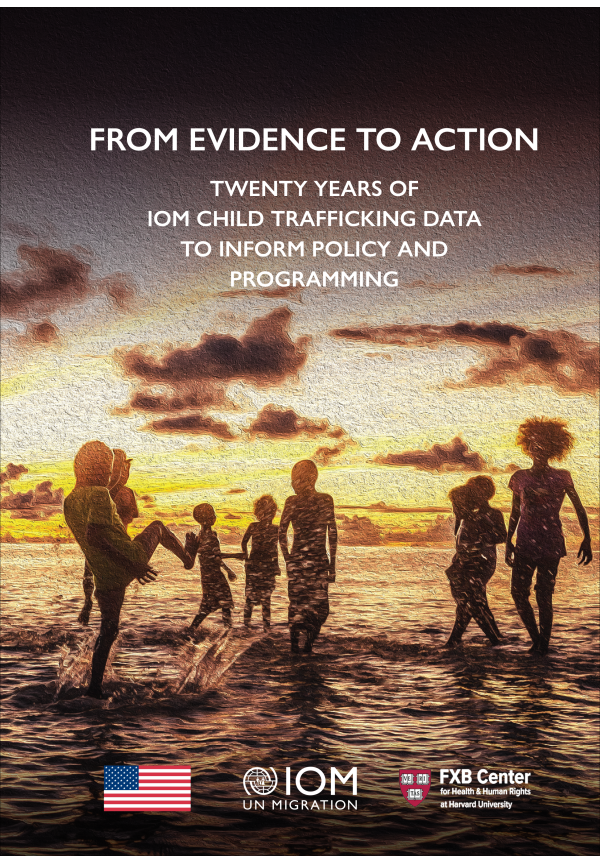From Evidence to Action: Twenty years of IOM child trafficking data to inform policy and programming

05 juil 2023
From Evidence to Action: Twenty years of IOM child trafficking data to inform policy and programming
Despite efforts, large numbers of children continue to fall victim to traffickers worldwide, due to inequitable social, economic, environmental and political factors that engender exploitative and discriminatory practices. A critical component of countering trafficking is reliable and up-to-date data, to empirically ground interventions, though actionable data are limited, and child victims are typically hard to reach.
This report, based on analysis of extensive, globally sourced data, is the first of its kind and analyses primary data from more than 69,000 victims of trafficking of 156 nationalities, trafficked in 186 countries, who registered with IOM in its 113 countries of operation, using the IOM Victims of Trafficking Database (VoTD) - the largest available international database of individual victims of trafficking.
The report shows that child trafficking is a multifaceted and complex phenomenon that continues to spread and evolve within and across borders. No age range, no gender and no nationality are immune to child trafficking; it is a truly global phenomenon. However, the study provides evidence of important trends and dynamics, linked to factors such as age, gender and geography, that help further our understanding of the phenomenon, with the potential to inform policy and programming.
From Evidence to Action: Twenty Years of IOM Child Trafficking Data to Inform Policy and Programming was produced through a collaboration between the International Organization for Migration and the François-Xavier Bagnoud Center for Health and Human Rights at Harvard University.
Read More
- Acknowledgements
- List of tables, text boxes and figures
- Acronyms
- Glossary of terms
- Executive summary
- 1. Introduction and background
- 1.1. The contribution of this report
- 1.2. Research perspective on human trafficking, child trafficking and vulnerability
- 1.3. Child trafficking: Frameworks, concepts and definitions
- 1.4. Evidence-based policy and programming
- 2. Methodology
- 2.1. The Victims of Trafficking Database: Scope, data collection process, measures and geographic focus
- 2.2. Data analysis
- 2.3. Methodological limitations
- 3. Child trafficking across the globe: Understanding trends, patterns and dynamics
- 3.1. The basic profile of child victims
- 3.1.1. Level of educational attainment
- 3.2. The dynamics of human trafficking: Recruitment process, means of control, type of exploitation
- 3.2.1. The act: The recruitment process
- 3.2.2. The means: Enmeshment in human trafficking
- 3.2.3. The purpose: Forms of exploitation
- 3.3. Mapping the trade in children: Global movements related to child trafficking
- 3.1. The basic profile of child victims
- 4. Understanding why some children are more vulnerable than others
- 4.1. Developing predictive models
- 4.2. Results
- 5. Reflections, conclusions and recommendations
- References